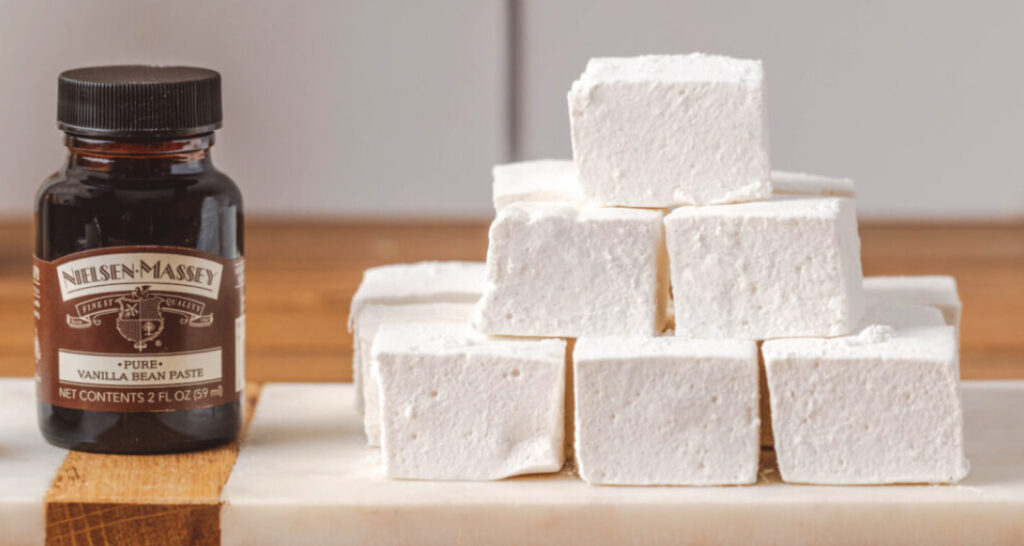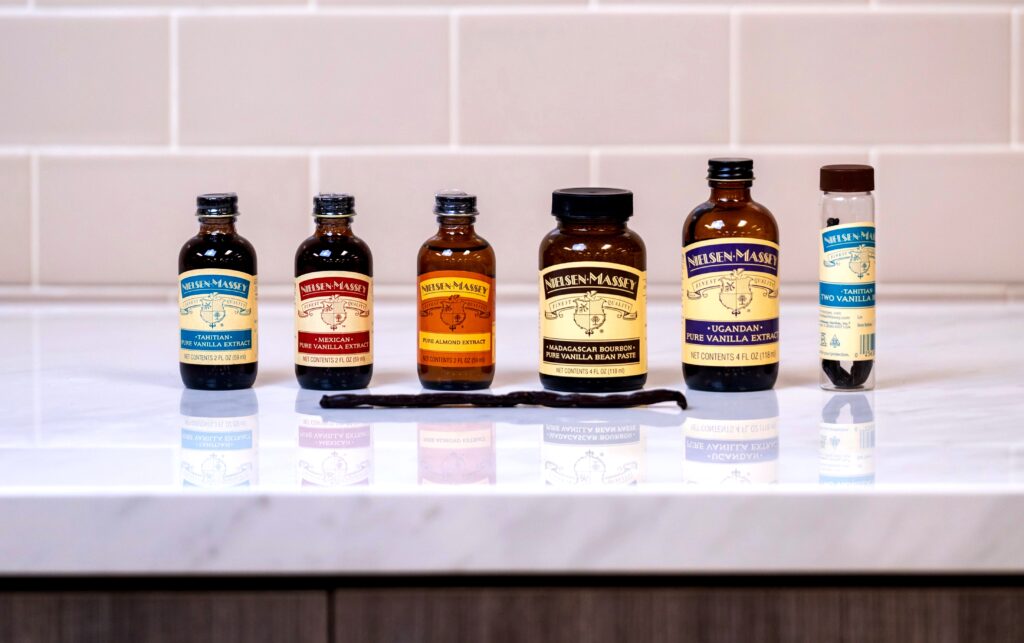Marshmallow has been a favorite sweet treat for many people around the world. Roasting marshmallows over a campfire or an open fire is a popular backyard tradition in the United Kingdom, North America, New Zealand, and Australia. S’mores are a favorite dessert in the United States and Canada, particularly during the summer months.
Today is National Toasted Marshmallow Day and to celebrate this versatile confection, we offer a simple and delicious recipe from one of Club Coupe du Monde Team USA’s sponsors, Nielsen-Massey Vanilla.
The Origins of Marshmallow
The history of marshmallows is an interesting journey that spans thousands of years and involves various cultures. The marshmallow as we know it today has evolved from its ancient origins to become a popular confection enjoyed worldwide.

The word “marshmallow” comes from the mallow plant species (Althaea officinalis), a herb native to parts of Europe, North Africa, and Asia that grows in marshes and other damp areas. The plant’s stem and leaves are fleshy, and its white flower has five petals.
According to How Products Are Made, it was in France around 1850 that the foundations of contemporary marshmallow confections were laid. The initial manufacturing process was both costly and gradual, as it required the meticulous casting and shaping of every individual marshmallow. French confectioners harnessed the mallow root sap to act as a cohesive agent for amalgamating egg whites, corn syrup, and water. The resulting light and airy blend underwent heating before being poured into petite molds coated with corn starch, thus giving rise to the marshmallows. During this time, the production of marshmallows was made by artisans in simple confectionery shops or small-scale candy enterprises.
It was not until 1900, that marshmallows were available to the masses. The advent of the starch mogul system in the late 19th century facilitated the mass production of marshmallows. Starch mogul refers to a device that produces formed candies or centers using syrups or gels. Eventually, gelatin and alternative whipping agents replaced mallow root.
“In 1955, there were nearly 35 manufacturers of marshmallows in the United States,” writes How Products Are Made. “About this time, Alex Doumak, of Doumak, Inc., patented a new manufacturing method called the extrusion process. This invention changed the history of marshmallow production and is still used today.” Sixty-eight years later there are only three manufacturers of marshmallows in the United States, Favorite Brands International (Kraft marshmallows), Doumak, Inc., and Kidd & Company.
Marshmallow is a type of confectionery that is typically made from sugar, water, and gelatin whipped to a solid but soft consistency. It is used as a filling in baking or normally molded into shapes and coated with corn starch.
FLUFFY HOMEMADE MARSHMALLOWS
Recipe courtesy of Nielsen-Massey Vanilla

| Ingredients | Imperial | Metric |
| Confectioners Sugar | 1/2 cup | 50 g |
| Cornstarch | 1/4 cup | 32 g |
| Cold Water | 3/4 cup | 180ml |
| Unflavored Gelatin | 4 envelopes | — |
| Granulated Sugar | 2 1/2 cups | 500 g |
| Corn Syrup (clear) | 1 cup | 240 ml |
| Water | 1/2 cup | 120 ml |
| Salt | 1/4 teaspoon | — |
| Nielsen-Massey Pure Vanilla Bean Paste | 2 tablespoons | 30 ml |
Instructions
In a large bowl, combine powdered sugar and cornstarch; set aside. Line a 23 x 33-centimeter glass baking dish with foil. Lightly coat foil with non-stick cooking spray; set aside. Fit a stand mixer with a whisk attachment and pour 180 ml cold water into the mixing bowl. Add gelatin to the water to soften.
In a medium saucepan, add sugar, corn syrup, water and salt; stir to combine. Place over medium-high heat until sugar dissolves, about 3-4 minutes, stirring occasionally. Attach candy thermometer to saucepan and continue to cook (without stirring) until mixture reaches 115°C, about 10-12 minutes. Remove from heat.
Turn mixer on low speed. Slowly pour sugar syrup down the side of the bowl into the softened gelatin. After all the sugar syrup has been added, gradually increase speed of mixer to high and beat until mixture is thick, about 15 minutes. Add vanilla bean paste during the last minute of beating.
Pour the marshmallow mixture into the prepared baking dish and spread evenly with a spatula. Refrigerate until firm, about 3 hours. Sift half of the powdered sugar and cornstarch mixture onto a piece of parchment paper. Turn the chilled marshmallow onto a sugared surface and remove the foil. Using a pizza cutter, cut into 2.5-centimeter squares. Roll marshmallows in the remaining powdered sugar mixture. Store in an air-tight container at room temperature for up to 2 weeks.

NOTE: You can use Pure Vanilla Bean Paste in place of Madagascar Bourbon Pure Vanilla Bean Paste to achieve a different, but still delicious, flavor profile. Simply use the same amount of Pure Vanilla Bean Paste.
This recipe offers versatility throughout the year. Beyond the summer season, these marshmallows can still be crafted to make an absolutely decadent hot chocolate.